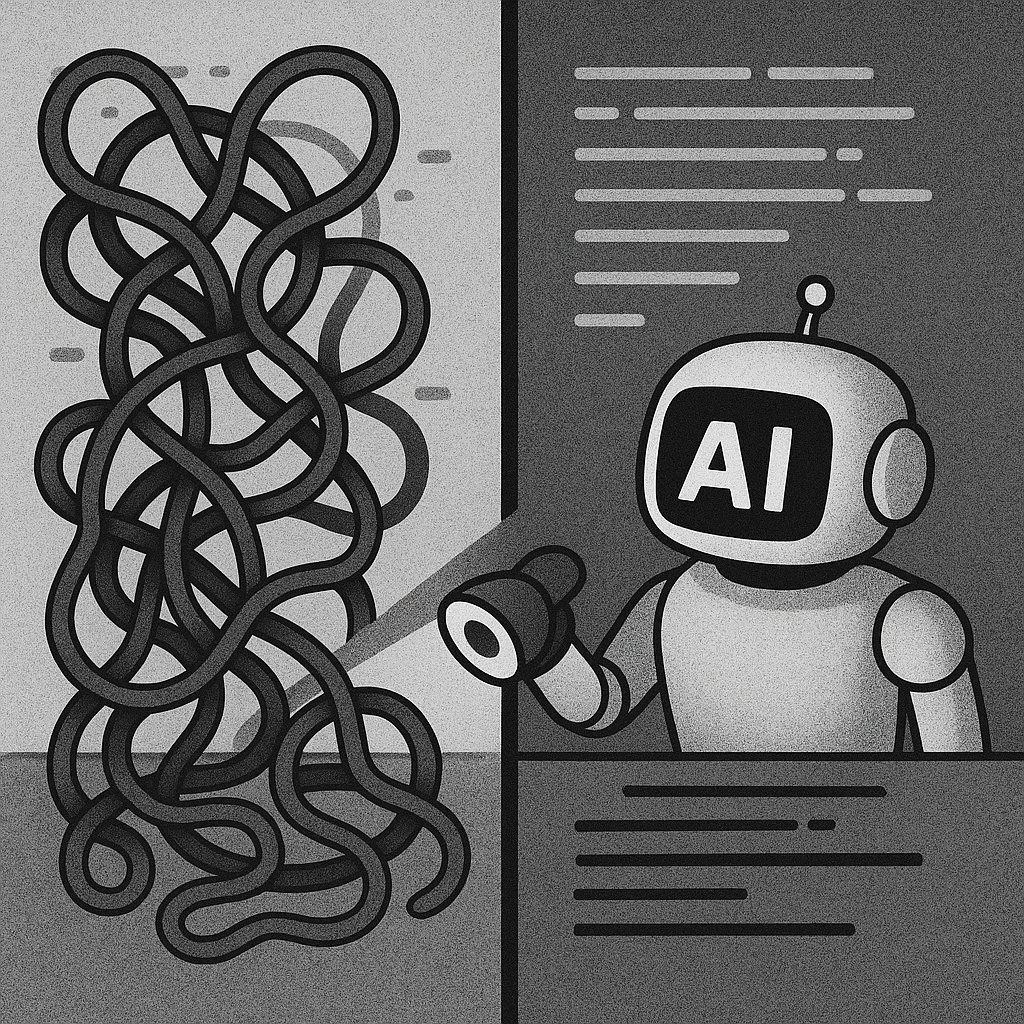Talking with various people in the industry about how AI will affect software engineering long‑term, I keep hearing something I disagree with: that technical debt is getting cheaper because AI can now explain a codebase and help us tidy up the mess. I understand that it may seem that AI-powered coding assistants may help up get away with sloppy code, since refactoring can be done faster than ever, but in reality, generative AI is widening the performance gap between clean and messy codebases, making technical debt costlier than ever.
What's happening in practice? AI assistants, whether it’s Cursor, Claude, Devin, or other tools, excel when they encounter familiar patterns, narrow scopes, and explicit interfaces. In a codebase where each function does exactly one thing, where dependencies are declared clearly and tests cover expected behaviors, AI can complete boilerplate in seconds, draft precise unit tests from brief prompts, and even suggest refactors that are accurate enough to merge after a (quick) human review. By contrast, legacy code with hidden side‑effects, unclear data flows, and deep dependency trees forces developers to spend time deciphering context. Instead of accelerating progress, AI becomes another layer of complexity, often producing incoherent patches or even bugs that require manual correction. Reviewing AI-generated code in a messy codebase becomes even more time consuming and less trusty than reviewing human written code.
Every hour a high‑debt team spends untangling spaghetti logic is an hour a low‑debt competitor devotes to pushing new features.

There’s also the opinion that AI tools will get smarter and smarter, so they’ll be able to tackle the complexity of a messy codebase more easily. That’s not a strategy though, that’s a wish. Teams must adapt their codebases today to be AI‑friendly. That means embracing modular boundaries so AI can reason about them more easily, defining well‑documented APIs, ensuring there’s a single pattern for doing X instead of ten different ways, and naming things clearly so AI doesn’t get lost when trying to propose a change.
I’d also argue that tech debt is more expensive than ever for one more reason: the most powerful models cost more. In a clean codebase, you may achieve what you want with a smaller, cheaper model, with less context and fewer tool calls. In a messy codebase, the assistant will need more tool calls, a pricier model, and more time to understand your problem. Engineers will wait longer for a response and often switch to another task, adding the hidden cost of context switching.
In an AI‑driven era, good code isn’t a sunk cost, it’s an investment that compounds over time. Teams that disentangle legacy systems into clean, modular architectures unlock the full potential: rapid prototyping of new features, reliable automated refactoring, and instant meaningful test generation. By treating technical debt as the hidden profit‑killer it truly is engineers can transform AI from a flashy gimmick into a sustainable competitive advantage. When every pull request is faster, every release more reliable, and every new hire productive from day one, the returns on clean code become impossible to ignore.